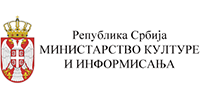
About Project
SEE Mosaics is a project that aims to increase visibility of mosaic heritage in SE Europe and reinforce the mosaic conservation profession in the region. Project gathers professionals from cultural institutions from eight countries: Albania, Bosnia and Herzegovina, Bulgaria, Croatia, North Macedonia, Montenegro, Serbia and Slovenia.
Project objectives are to:
- Develop network of professionals involved with mosaic conservation,
- Record capacities of the region regarding ancient mosaic heritage and its state of conservation, as well as conservation resources,
- Promote mosaic heritage of Southeast Europe and institutions involved in its conservation.
Regional survey Mosaic Conservation and Training of Conservators in Southeast Europe
In response to recording capacities of the region, the Regional survey Mosaic Conservation and Training of Conservators in Southeast Europe was initiated in 2008. The idea behind this initiative was to try to raise awareness at regional level, both amongst professionals and national authorities, about the needs for more organized and active protection of the ancient mosaic heritage. The main goal of the survey was to assess needs for conservation of ancient mosaic pavements in SE Europe.
Mission
Determining capacities of the region regarding ancient mosaic heritage and its state of conservation, as well as conservation resources, in order to allow for efficient planning and implementation of conservation and educational projects in the future.
Scope
The survey refers to ancient mosaic pavements on archaeological sites that are open to the public and in museum collections. It covers eight countries: Albania, Bosnia and Herzegovina, Bulgaria, Croatia, North Macedonia, Montenegro, Serbia and Slovenia.
Survey objectives
-
To present a quantitative picture of the existence of ancient mosaic pavements on archaeological sites open to the public and in museums in the region of Southeast Europe.
-
To present the quantitative and qualitative picture of the state of conservation of ancient mosaic pavements on archaeological sites open to the public and in museums in the region of Southeast Europe.
-
To determine the number of people working in mosaic conservation, their professional qualifications, as well as the existence of academic study programs and professional training programs in the region.
Survey methodology
The survey was conducted through questionnaires. Three questionnaires were conceived to fulfill the following objectives of the survey:
- Questionnaire for mosaics on archaeological sites open to public
- Questionnaire for mosaics in museums
- Questionnaire concerning mosaic conservation practice and professionals working in this field
Database
Results obtained through questionnaires are systemized and input in the database in order to be statistically analyzed and to enable presentation of the survey results. Database can be searched online to draw various reports on mosaics in museums, archaeological sites open to the public, as well as on mosaic conservation in the region. Access to integral versions of the questionnaires is available to professionals from all the institutions that took part in the survey and to registered users.
Implementation
First phase
The survey was conducted in 2011-2012. Invitation to take part was sent to 59 institutions around the region that are responsible for mosaics, out of which 43 accepted participation and filled questionnaires for mosaics in their responsibility. The questionnaires were filled for 39 sites open to the public and 32 museums. They included all museums and sites open to the public with mosaics from Bosnia and Herzegovina, North Macedonia, Montenegro, Slovenia and Serbia and most from Albania, Bulgaria and Croatia. This phase of the survey was led by the Central Institute for Conservation in Belgrade and supported by UNESCO Office in Venice, Regional Alliance ICOM SEE and National Academy of Art, Sofia.
Second phase
The database was updated in 2022 to include changes in the period of ten years, both regarding discoveries of new mosaics and mosaic conservation. The update and further activities in the survey are carried on by the National Museum of Serbia, supported by the Ministry of Culture and Information of Serbia. As the state of mosaic conservation in the region is changing, online database will be periodically updated.
Sustainability
Statistical analysis of the survey results give a clear picture of the capacities and the needs for the conservation and presentation of mosaic heritage in SE Europe. The results of the survey could allow for better planning of conservation projects by determining priorities, help create training programs either at local or regional level, thus fostering inter-institutional collaboration in the region.
Implementation of the survey led to creating contacts with professionals and institutions involved with mosaic heritage, creating a nucleus of professionals interested to foster mosaic heritage in the region and a platform for developing a network of specialists involved with mosaic conservation.
Acknowledgments
Institutions that participated in the Regional survey Mosaic Conservation and Training of Conservators in Southeast Europe and their staff for recognising benefits of the project and by taking the effort to gather information and fill the questionnaires.
Gaël de Guichen and Valerie Magar from ICCROM for their help in conceiving survey questionnaires.
UNESCO Office in Venice for supporting the project in 2011.
Central European Initiative for supporting SEE Mosaic meetings from 2013 onwards.




